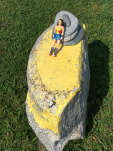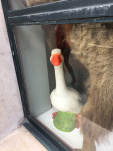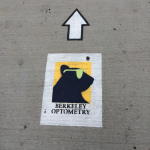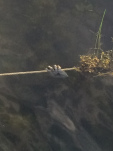Seeing Like a Writer
Kate Flora: I was driving on the Maine turnpike last week and suddenly there appeared [image error]to be an explosion of squirrels trying to cross a six lane highway. It was something that I’d never seen before, and after the fourth squirrel, and a fifth that didn’t make it, I began to notice how the Maine roads were littered with dead squirrels. I’m not alone. This week the Boston Globe had an article explaining the squirrel explosion: https://www.bostonglobe.com/metro/2018/09/24/squirrel-nado-squirrel-population-midst-unprecedented-boom/FUciejVPnY2Cp7jkHf7BlM/story.html
What’s my point? That in order to render convincing, nuanced worlds, writers have to be constantly aware of the world around us. As I told a library audience this week, they may drive past a car on the side of the road with its door open and worry about the battery running down, while a crime writer wants to know who was in the car, why they suddenly exited, where they are now, and what they are doing? Why is there only one shoe beside the road? We’re the ones who photograph odd scenes, and who have interesting clippings on our refrigerators or in our files. I have two: pulmonary physician dies at home of asthma attack, and plague mice missing from lab.
[image error]
Bakery window in France
I used to tell my writing students that despite the advice they got from parents about minding their own business, it was a writer’s job to be curious. I even used to hand out a “License to be Nosy.” I used to give them writing exercises about the people or incidents they’d seen. “Collect people,” I’d tell them. “How they dress, how they walk, how they interact with the world.” I’d give out a writing assignment that involved going into a coffee shop, picking out two people with interesting accessories or outfits, and then writing the dialogue when they meet. I’d say, “when you park your car, notice the cars around you when you get out. Do they tell you something about the drivers?”
It doesn’t necessarily come naturally, this habit of paying attention to the world. We’re all


so busy, so often hurrying from one place to another, and when we’re not in motion, we tend to be plugged into devices. I have to remind myself to stop. Slow down. Look up. Look around. If I only go to my desk and work or to my kitchen to cook or to my car to do an errand, I’ll miss the delicate dance of the leaves as they head for the ground. I’ll miss the little white mushrooms on my neighbor’s lawn that look like a cluster of golf balls. I’ll miss a blue sky filled with quilted mackerel clouds and wispy cirrus clouds, or the immense piles of white whipped cream clouds. I’ll miss the swoops and cries of the terns. The gabble of the eider ducks that sounds like distant conversation.
Another layer of this challenge of seeing the world is coming to see it through our character’s eyes. While our characters may have some of our attributes, they are also distinct individuals. I know that Joe Burgess was taught to be a close observer by his mother, and he has a very visual take on the world. If I didn’t observe on his behalf, I wouldn’t be able to have him see this:
He leaned back, staring at the windshield. At the top, the sun peeping over the Old Port’s brick buildings illuminated icy etchings, elaborately and intricately beautiful. At the bottom, heat turned the beautiful detailing to opaque mush. Soon the slap of wiper blades would flick it all away, giving him back a clear view of the lot full of salt-rimed cars and dirty snow. Sic transit gloria mundi.






As I travel through the world, I am constantly seeing, and photographing, visuals that I may use some day. Posters, signs on the sidewalk, reflections in the windows. Someday, I may have a use for them.
Every character will see their world differently, and it is our job, as writers, to see through their eyes. My architect may enter rooms and immediately start moving walls and windows. Ross McIntyre, my high school biology teacher, is attuned to the natural world, to the foibles of adolescence, and to the details of small town life. Burgess is visual and a close observer of people. Thea, too, is an observer of people, and a sympathetic champion of the underdog.
What do you do to “tune up” your observations? At the beginning of a class session, I like to hand out notebooks, small enough to fit in a pocket or purse, and encourage my students to write down things they see and hear. That notebook serves as a reminder to be observant. Do you carry a notebook? Capture images with your phone? Have you ever gone out for an hour, or a few hours, trying to see the world through your character’s eyes?



